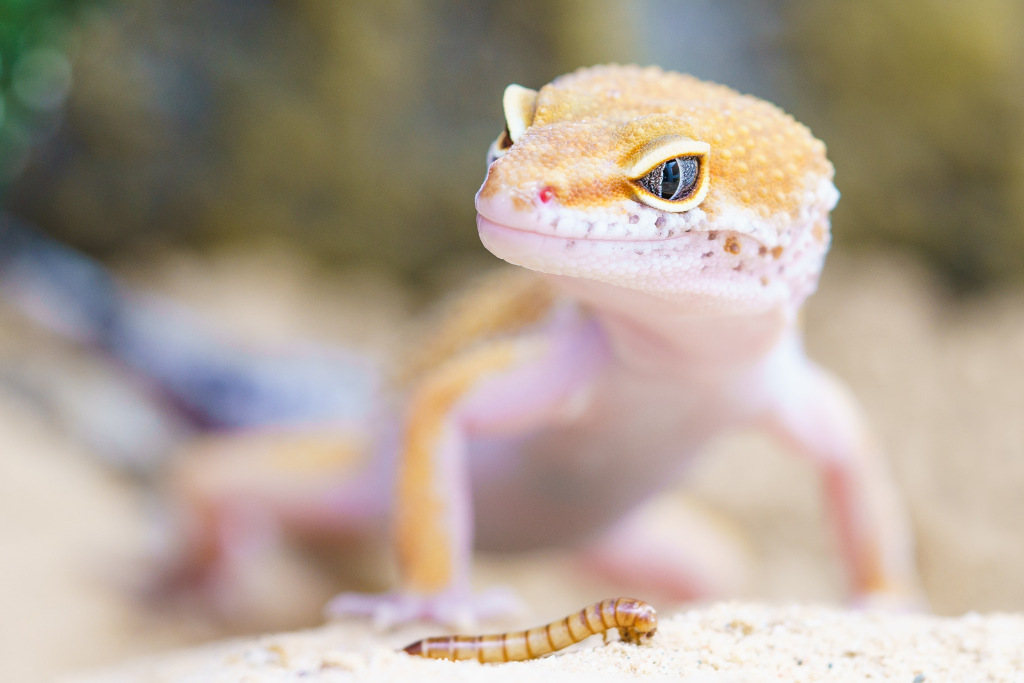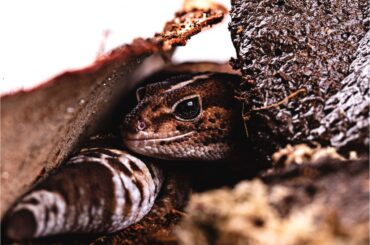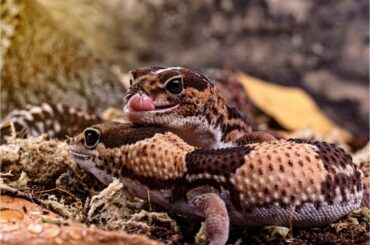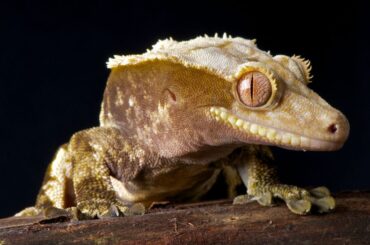Have you ever wondered what those soft clicks and chirps mean? Do leopard geckos make noise? Are you thinking of how leopard geckos show how they feel, what they need, or what they want?
Leopard geckos are reptiles that use sounds to show their feelings. Understanding how they click, chirp, and squeak will enable you to decode if they’re happy, sad, curious, or in fear. You’ll get to know if they are at ease, uncomfortable, or ready for a bit of gecko romance.
The vocalizations of leopard geckos will give you an idea of their inner world. Regular chattering means they are ready to mate, while a quick series of clicks means fighting over a particular area.
Leopard Gecko Noises And Meanings
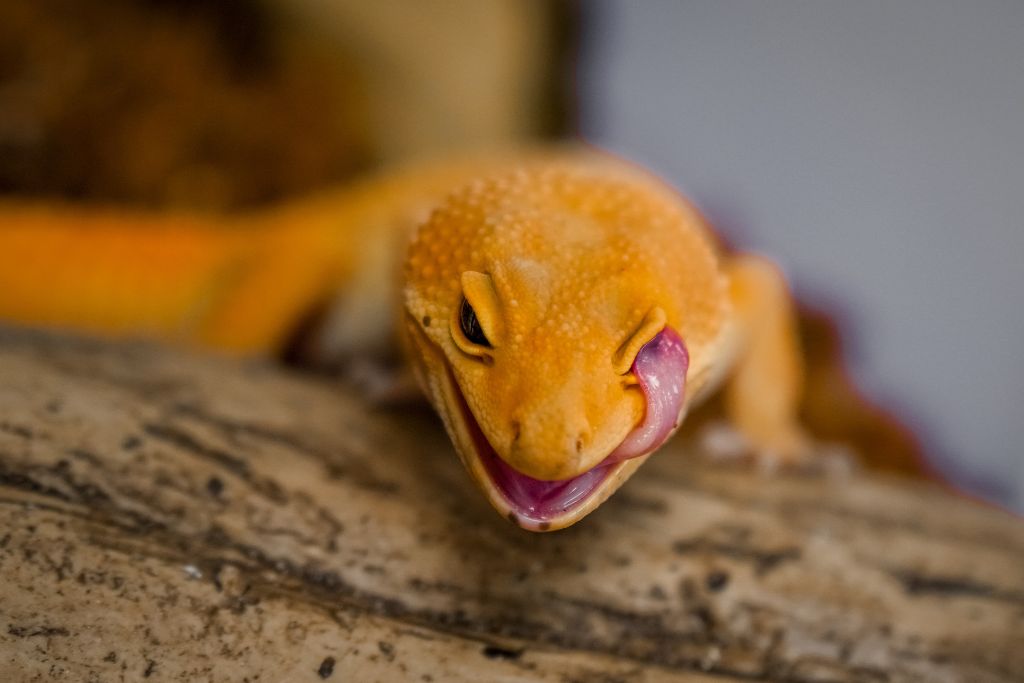
Leopard geckos are known for their body language and touch. However, they still make leopard gecko noises that will give you insights into their emotions and behaviors. Even though these ways are less complex than others, they still play a vital role in the leopard’s way of expressing itself.
Naturally, leopard geckos possess unique vocal cords that produce quiet, low-pitched sounds. They make a few sounds, like soft chirps, clicks, and squeaks, which are louder when mating or looking for a territory.
Knowing this, reptile lovers and pet owners should focus on decoding leopard gecko noises and meanings to understand them better. For example, certain sounds might be produced when they feel scared or threatened. Softer sounds might be connected to their flirty side during mating.
Hissing: Unsettled Or Defensive Behavior
Do you know what it means when a leopard gecko produces a “hissing” sound?
Leopard geckos are uncomfortable when a “hiss” sound is combined with a raised tail, a flattened body, and a slight arch to the back.
Generally, leopard geckos are friendly and calm lizards, but when they “hiss,” they feel threatened or stressed by their surroundings. This is also their way of signaling to predators or possible dangers to stay away.
Understanding leopard gecko cues can help relieve stress and ensure overall well-being. Another thing to consider is the role of lighting for leopard geckos. Suitable lighting helps regulate their circadian rhythms, supports digestion, and encourages rest.
Common Triggers For Hissing
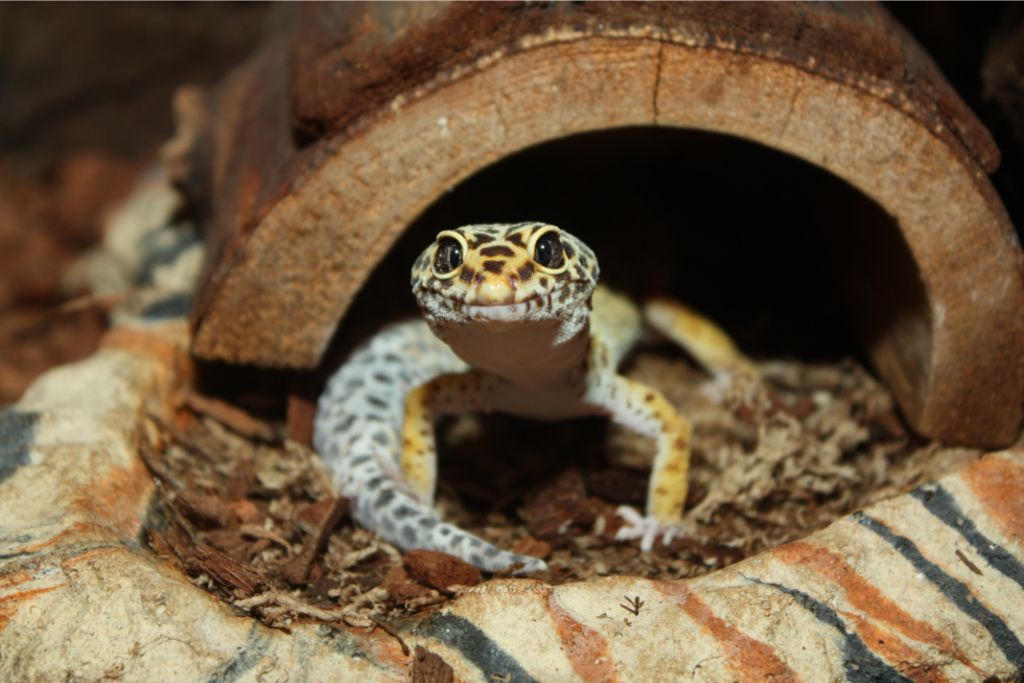
Various factors contribute to the hissing behavior of leopard geckos. It is essential to know these factors to meet their needs and enhance their well-being effectively. Here are the common triggers for hissing in leopard geckos:
- Handling Stress: Too much distress can make the leopard gecko feel threatened and respond with hissing. This means they long for a more gradual and gentle approach to handling.
- Territorial Agitation: Leopard geckos will hiss if they think a predator is approaching their space. This is their way of protecting their territory.
- Health Issues: Infections and injuries cause discomfort that can lead to hissing. Seeking veterinary care and ongoing monitoring are necessary to address declining health.
- Habitat Conditions: Leopard geckos will hiss if they can’t find a good place to hide and the temperature is too high or too low.
- Mating Aggression: During mating season, male geckos may hiss to attract the attention of females. This is their way of showing dominance and the right to mate.
- Feeding Problems: When faced with difficulties while feeding, geckos may tend to hiss. You can prevent this by providing the right amount of easily accessible food.
- Environment Changes: Hissing behavior is evident when geckos face changes in their surroundings, such as moving into a new cage or having lighting or humidity alterations.
- Presence of Predators: Potential threats, when sensed by geckos, will cause them to hiss. This is their way of scaring away possible danger.
Chirping: Courtship And Mating Behavior
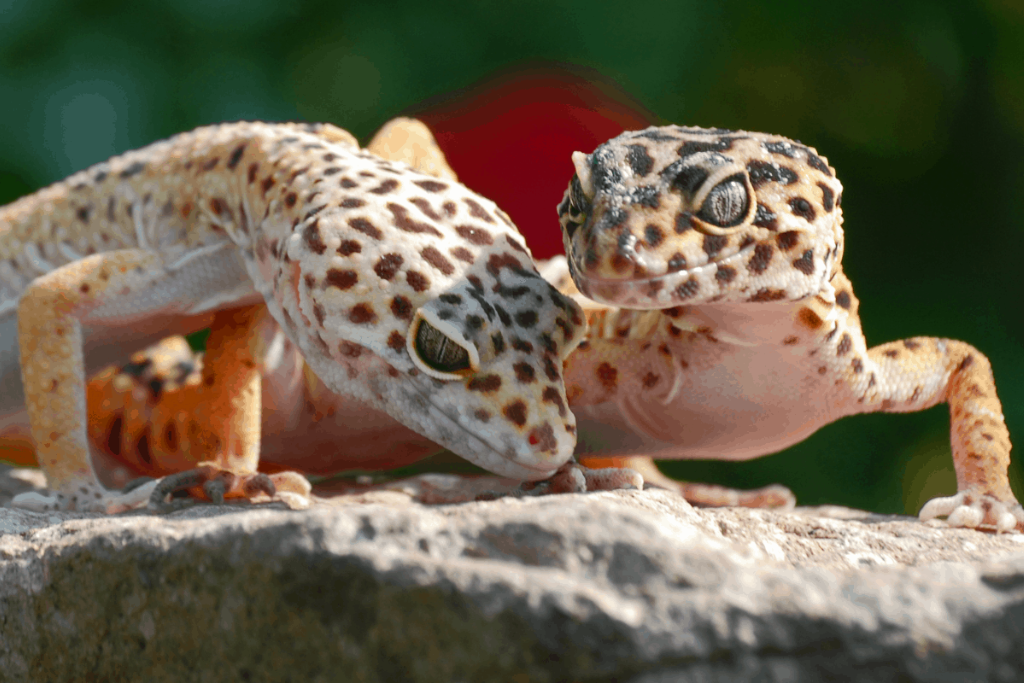
Can you imagine a lizard singing a love song to impress a potential mate? That’s how leopard geckos show their interest during courtship displays.
It’s true enough that when male geckos want to hunt for a girlfriend or mate, they chirp to catch the female gecko’s attention. It is also their way of keeping it cool and their version of sending a message.
So, why chirp? Male leopard geckos chirp for two reasons: the first is to attract female geckos, and the second is to show that they are in charge. Male geckos chirp loudly to prove that they’re strong and in control.
On the other hand, the female gecko’s responsibility would be to check and decide whether a male’s chirping is good enough. If they like what they hear and see, they will chirp back as a response to show they’re interested, too.
Chirping And Squeaking: Happy Noises
This is one of the most enchanting forms of leopard gecko’s vocal expression. Characterized by a high-pitched and soft natural sound produced by a chirping cricket. These sounds are emitted when a leopard gecko is happy, enjoying and satisfied with their surroundings.
Chirping and squeaking are often connected with moments of happiness and relaxation for the gecko. Leopard geckos vocalize when they are experiencing pleasure brought by basking under warm lamps, exploring their terrarium, or interacting with their fellow geckos.
You can hear a leopard gecko’s happy noises during courtship rituals. Since this is their way of courting or conveying their intentions to win the favor of their gecko counterpart.
Clicking: Hunting And Predatory Instincts
Leopard geckos make a cool clicking sound when hunting for food. When they are hungry, they make a clicking sound to pretend to be insects or bugs, which their prey likes to eat. If the prey thinks they have found a tasty bug, they will move closer to the gecko.
The clicking trick is a clever way for geckos to get food easily. If they have seen that a prey is close enough, they will wait for the right moment to catch it. “Come closer; I’m a tasty treat.” This will be the equal words of the clicking sound that leopard geckos make. After producing the sound, they will move quickly to catch the unsuspecting prey.
Barking: Threatened And Stressed
Clicking and barking are animals’ ways of telling how they feel. It is likely how humans use words to say things. Animal barking, on the other hand, is a more serious response. It is similar to the use of stronger words to show how humans are upset.
Leopard geckos bark if they sense potential trouble nearby. Barking is their big shout for help, especially if they are threatened or under great stress. It’s their way of speaking up and responding to stay safe in the animal world.
Common Triggers For Barking
Leopard geckos are unique lizards that use different sounds, like barking, to express how they feel. Here are the common triggers for barking in leopard geckos:
- When They’re Scared: Barking is a gecko’s way of saying, “Hey, I’m not feeling safe.” They may have seen something strange or big that made them feel nervous.
- Talking to Friends: They bark to say hello to friends. This is their way of conversing with other geckos.
- Finding A Mate: Sometimes barking is also a gecko’s way of trying to find a special friend or mate to be with.
Screaming: Scared And Threatened
Young geckos can actually make loud screaming sounds. Most of the time, little geckos, known as juveniles, are the ones producing them.
Screaming is the leopard gecko’s way of saying that they are scared, need help, or that there are possible dangers nearby. It’s also their way of staying safe and alerting their fellow geckos about incoming troubles.
Leopard geckos will outgrow their screaming phase once they get used to their surroundings. When the geckos become comfortable in their new space, they will be less likely to feel scared or attacked. As a result, they won’t need to scream as much as they become calmer and quieter.
Common Triggers For Screaming
Animals are just like humans; they use sound to communicate and express their wants and needs. Some animals scream to show that they were angry, scared, or protecting themselves.
Common triggers for screaming in leopard geckos are:
- Terrifying Predators: Leopard geckos scream when they see a giant predator, like snakes or birds. This is also their way of warning other geckos about approaching predators.
- Gecko Showdown: Leopard gecko noises include screaming to show who’s in control or the boss in a current situation.
- Feeling Uncomfortable: These animals tend to scream when they feel some discomfort, such as from environmental change. Maybe it’s too hot, too cold, or too bright.
Responding To Gecko Noises
Paying attention to leopard gecko noises and meanings are vital for us to understand what they are going through and why they possess such behavior. These sounds serve as their means of communicating not just only with other animals but also with humans.
Knowing their auditory cues will enable you to basically understand their vocalizations. For example, a series of clicks or chirps may indicate there might be a potential mate nearby.
Most importantly, responding to their sounds accurately will ensure that you meet their needs, well-being, and comfort.
Conclusion
Attentive and diligent care for geckos is a must. Through understanding and responding to leopard gecko noises and meanings, you can ensure their overall well-being and enable them to thrive in captivity.
The way geckos communicate is unique. Thus, you should take the time to learn and appreciate their distinct sounds, not just to connect with them but also to provide the quality care they deserve and need.
FAQs
Do Leopard Geckos Make Noise?
Yes, leopard geckos tend to make noises such as hissing, chirping, clicking, barking, and sometimes screaming.
What Does It Mean When A Leopard Gecko Makes Noise?
It means that they may be uncomfortable (when they hiss), courting (when they chirp), hunting (when they click), or threatened (when they bark).
Why Do Leopard Geckos Make Loud Noises?
If you encountered loud noises from leopard geckos, it might be the result of stress, feeling threatened, or a territorial dispute.

